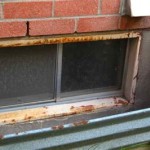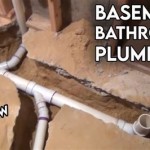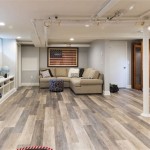White Chalky Substance on Basement Walls
Discovering a white, chalky substance on basement walls is a common experience for homeowners. This substance, often powdery or flaky, can indicate several underlying issues, ranging from relatively benign to more serious structural problems. Correctly identifying the cause is crucial for implementing the appropriate solution.
One of the most frequent causes of this white residue is efflorescence. Efflorescence occurs when water-soluble salts within concrete, brick, or other building materials are transported to the surface by moisture. As the water evaporates, it leaves behind these salts, forming a white, crystalline deposit. Efflorescence itself is not typically harmful to the structural integrity of the wall, although it can be unsightly. Its presence, however, signals moisture intrusion, which should be addressed.
Moisture intrusion can stem from several sources. Cracks in the foundation, improper drainage around the exterior of the house, leaky pipes, or high humidity levels within the basement can all contribute to moisture problems. Investigating and addressing these underlying moisture issues is essential to prevent further efflorescence and potential damage.
Another possible cause of the white substance is lime leaching. This phenomenon, similar to efflorescence, occurs when calcium hydroxide, a component of concrete, is leached out by water. As the calcium hydroxide reacts with carbon dioxide in the air, it forms calcium carbonate, which appears as a white, chalky deposit on the surface. Like efflorescence, lime leaching indicates moisture presence and requires addressing the underlying moisture issue.
While efflorescence and lime leaching are common culprits, the white substance could also be mold or mildew. Mold and mildew thrive in damp, dark environments like basements, and can appear as a white, powdery substance. Unlike efflorescence, mold and mildew pose health risks and should be treated immediately. If there is any suspicion of mold or mildew, professional testing is recommended.
Determining whether the white substance is efflorescence, lime leaching, or mold requires careful observation. Efflorescence and lime leaching typically appear crystalline or powdery, often with a uniform texture. They are usually found on concrete, brick, or other masonry surfaces. Mold, on the other hand, can appear fuzzy or slimy and often has a musty odor. It can grow on various surfaces, including wood, drywall, and insulation.
Testing the substance can help confirm its identity. For efflorescence or lime leaching, a simple test involves applying a few drops of diluted hydrochloric acid (muriatic acid) to the affected area. If the substance fizzes, it likely indicates the presence of calcium carbonate, suggesting efflorescence or lime leaching. For suspected mold, professional testing is crucial for accurate identification and remediation.
Addressing efflorescence or lime leaching involves several steps. Firstly, the source of the moisture must be identified and rectified. This might involve repairing cracks in the foundation, improving exterior drainage, or addressing plumbing leaks. Once the moisture issue is resolved, the efflorescence can be removed by dry brushing, scraping, or washing with a solution of diluted vinegar or a commercially available efflorescence cleaner.
Mold remediation requires a more comprehensive approach. The affected area must be thoroughly cleaned and disinfected using appropriate mold-killing products. Protective gear, including gloves and respirators, should be worn during the cleaning process. In cases of severe mold infestation, professional remediation services are often necessary.
Preventing future occurrences of white chalky substances on basement walls involves maintaining a dry basement environment. This includes ensuring proper ventilation, running a dehumidifier, and addressing any leaks or moisture intrusion promptly. Regular inspections of the basement for signs of moisture or mold can help prevent larger problems down the road.
Proper grading and drainage around the foundation are crucial for preventing water from accumulating against the basement walls. Gutters and downspouts should be kept clean and in good working order to direct rainwater away from the foundation. Sump pumps, if present, should be regularly inspected and maintained to ensure they are functioning correctly.
In conclusion, the presence of a white, chalky substance on basement walls warrants investigation. While often indicative of efflorescence or lime leaching, stemming from moisture intrusion, it could also signify mold growth. Accurate identification of the substance and addressing the underlying cause are crucial for effective remediation and prevention of future occurrences.

What S That White Stuff On My Basement Walls News And Events For Thrasher Foundation Repair

What Is The White Powder On Basement Walls News And Events For Advanced Systems

What S That White Stuff On My Basement Walls News And Events For Thrasher Foundation Repair

Efflorescence What Is That White Powder On My Foundation And Brick

Learn What Is Efflorescence

What S The White Stuff On My Basement Walls Foundation Repair

What S That White Stuff On My Basement Walls News And Events For Thrasher Foundation Repair

How To Identify That White Stuff On Your Concrete Wall Kryton

White Chalky Substance On Basement Walls What Is It New Haven Ct Budget Dry Waterproofing

White Substance On Basement Walls Interior Inspections Internachi Forum







